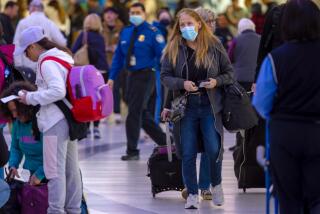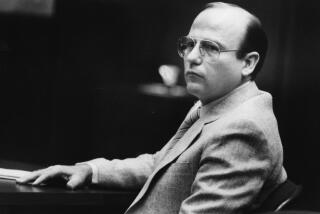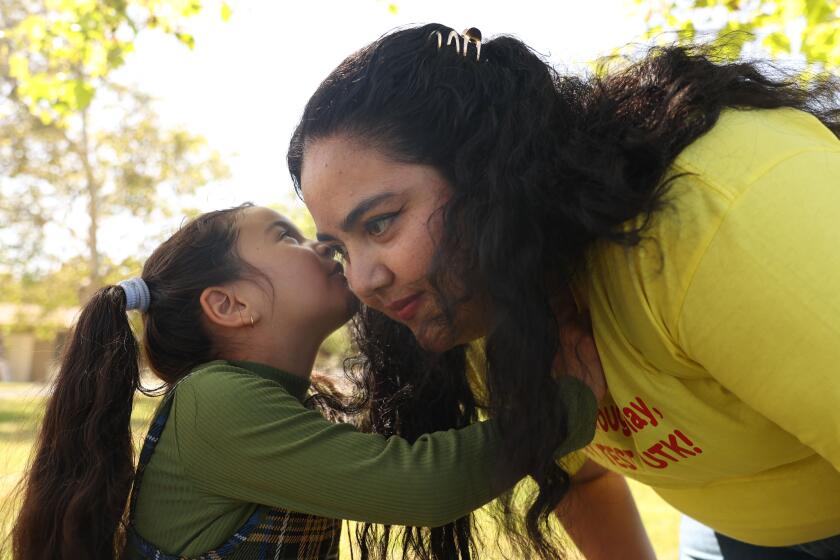Financial Ills Plague Public Colleges
Many public colleges and universities around the country are caught in financial squeezes, prompting midyear tuition increases and belt-tightening measures such as enrollment caps and faculty cuts.
The financial problems stem from strains on state budgets due to the slow national economy over the last year and a bulge in the number of youths reaching college age.
“This is the first time in the modern history of higher education that we’ve had enrollment pressure and a bad economy at the same time,” said Patrick M. Callan, president of the nonprofit National Center for Public Policy and Higher Education in San Jose.
Among the consequences: The University of Wisconsin system nine days ago stopped admitting new students and later froze hiring, amid a budget squabble between regents and lawmakers.
The University of Massachusetts at Amherst last week announced that it will eliminate seven of its 29 varsity sports teams. That follows an array of earlier cutbacks, including early retirement initiatives to thin the ranks of professors.
During recent months, some hard-pressed state schools, including universities in Ohio and Missouri, have taken the unusual tack of imposing midyear tuition increases.
In California, where lawmakers are struggling to plug a projected $17.5-billion gap in the state budget, the initial money-saving maneuvers have been comparatively gentle on higher education, especially at the four-year schools.
Yet some community college systems were heading for trouble even before the recent state budget meltdown.
One of those is the Los Angeles Community College District, which has seen a spike in enrollment over the last four years. Administrators there are considering eliminating scores of classes, hoping to hold enrollment to 130,000. That effectively would mean turning away an estimated 10,000 to 17,000 students.
“We’re really at the end of the rope,” said Marshall “Mark” Drummond, chancellor of the nine-campus district.
For the current school year, a College Board survey found that tuition at public schools--which serve more than three-quarters of the nation’s estimated 15 million college students--was up 7.7%. That was the biggest jump since 1993, and a blow to students and families already hurt by the sluggish national economy.
But at many campuses even heftier increases are coming for next year, and some schools have resorted to midyear hikes. At the University of Cincinnati, part of Ohio’s state university system, tuition rose 8% in June. Then, after the school year started in the fall, two more boosts totaling an additional 6% were imposed, bringing the annual cost to $6,175.
“You have a sort of contract with students about what they expect to pay for the year,” grumbled Robert E. Richardson Jr., an electrical engineering major and the student body president at University of Cincinnati. In the middle of a school year, he said, “that shouldn’t be dealt to us. We shouldn’t have to take the financial burden for what the state didn’t do” to finance higher education.
Richardson said he has heard from students who are reducing their course loads, working longer hours in their part-time jobs or getting bigger loans to offset the extra tuition costs.
For students at hard-pressed schools, higher education experts say, scholarship dollars are likely to be less plentiful. That would continue a long-running trend in which low-income students and others rely increasingly on loans to finance their educations.
The coming school year also is expected to bring more crowded classrooms. That’s worrisome for students like Dylan Lee Lehrke, an international studies major at the University of Washington in Seattle.
“It’s already really hard to get into classes, and when you do get into them they’re really large,” said Lehrke, 23. “Our faculty are already stretched really thin.”
A bill awaiting the signature of Washington Gov. Gary Locke would reduce the state’s higher education funding by 5% and would permit tuition for resident undergraduate students to rise by as much as 16%.
To a lesser extent, private schools and their students also are feeling the financial pinch. Although some of the nation’s most elite schools are cushioned by ample endowment funds, other private schools with more modest resources are receiving fewer and smaller donations from their financial supporters.
This is not the first time a wave of recession has crashed on campuses. In the early 1990s, California’s public colleges and universities endured spending cuts, declining enrollments and cost increases for students. This time around, the state’s four-year schools mostly have been spared.
As a result, California officials say they don’t expect attendance costs to go up for most students in the state’s systems. The exception is students who aren’t California residents; they are expected to be hit with higher charges from both the University of California and California State University systems.
University officials in California acknowledge, however, that the financial outlook could darken once work on the state’s 2002-03 budget intensifies in May. Lawmakers will be looking for an additional $5 billion in state spending cuts.
Historically well-funded schools such as those in California may be able to survive a lean year or two without much damage, Callan said, but then they too will face trouble. “We were getting more than our fair share, but all of a sudden [the economy] turned on us.”
Throughout the country, states increased funding for higher education for the current school year by an average of just 4.6%, the smallest rise in five years, according to one study. Higher education spending now is under even more pressure as legislators seek to pare state budgets for the coming year, despite signs that the nation is pulling out of recession.
The hard times are hitting campuses now because swings in state revenue typically lag the performance of the overall economy. State governments during the second half of last year suffered their first revenue decline in nearly a decade, according to the Nelson A. Rockefeller Institute of Government, the public policy research arm of the State University of New York.
For many state legislatures, higher education is an easier target than prisons, Medicare, welfare and kindergarten-through-12th-grade education.
By slashing higher education, “You’re not throwing kids out on the street. You’re not starving people. You’re not throwing them out of hospitals. You’re perhaps degrading higher education, but that just doesn’t have the same impact,” said Nicholas W. Jenny, senior policy analyst with the Rockefeller Institute.
States such as Oregon, Idaho, Illinois, Missouri, North Carolina and South Carolina are considering, or already have enacted, higher education spending reductions or tuition increases--or both.
The University of Massachusetts’ flagship campus in Amherst last week decided to eliminate varsity sports teams including men’s and women’s gymnastics, men’s tennis and women’s water polo and volleyball by year’s end.
That move, which is expected to reduce the athletic department’s budget by $500,000 to $1 million annually, follows two early retirement programs that could slash perhaps 80 faculty positions, along with other campus staff jobs.
In addition, the school is considering or already has imposed caps on enrollment in popular majors including economics, communications and biology, as well as for the honors program.
Unless there is a turnaround in the state’s budget, the outlook for next school year is grim, said Ernest D. May, secretary of the university’s faculty senate. Many students, he said, “will not be getting courses they want, they’ll not be able to get the professors they want, and they’ll not be able to get the majors they want.”
In Wisconsin, budget-slashing proposals prompted the university system to abruptly halt student admissions, leaving thousands of high-schoolers and would-be transfer students in the lurch.
The Legislature then made further cuts, bringing the proposed higher education reduction to $108 million overall. Then the university administration imposed a systemwide hiring freeze.
High school students are feeling the pain as well. At Oshkosh West High School in the industrial city of Oshkosh, Wis., about 80 miles northwest of Milwaukee, some of the students on admissions waiting lists could find themselves out of luck if there is no thaw in the admissions freeze, said guidance counselor Cecil Streeter.
Streeter said he is particularly concerned about high school sophomores and juniors who have planned, through a program coordinated with the state university system, to take courses next year providing both high school and college credit.
These dual-credit courses are on hold amid the admissions freeze. If there is no thaw by the time the high schools need to finish their schedules in June, “we could be in serious trouble,” Streeter said.
More to Read
Start your day right
Sign up for Essential California for news, features and recommendations from the L.A. Times and beyond in your inbox six days a week.
You may occasionally receive promotional content from the Los Angeles Times.






